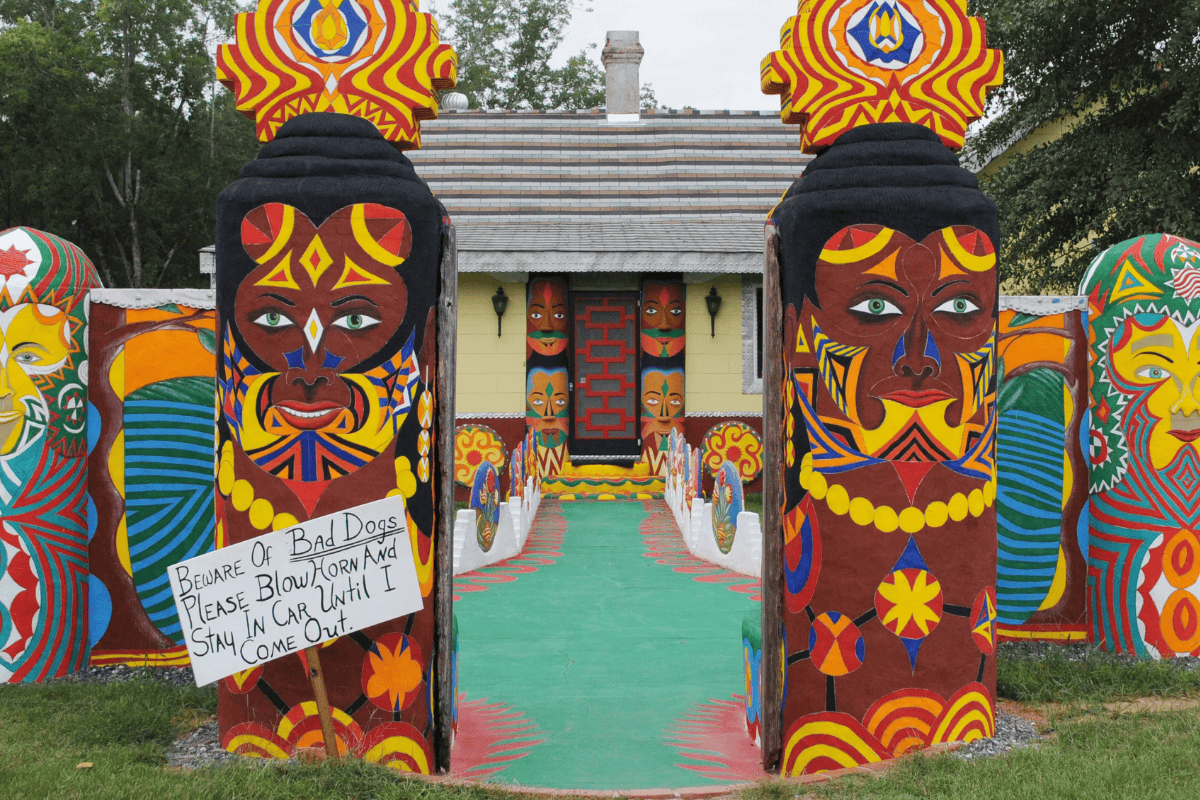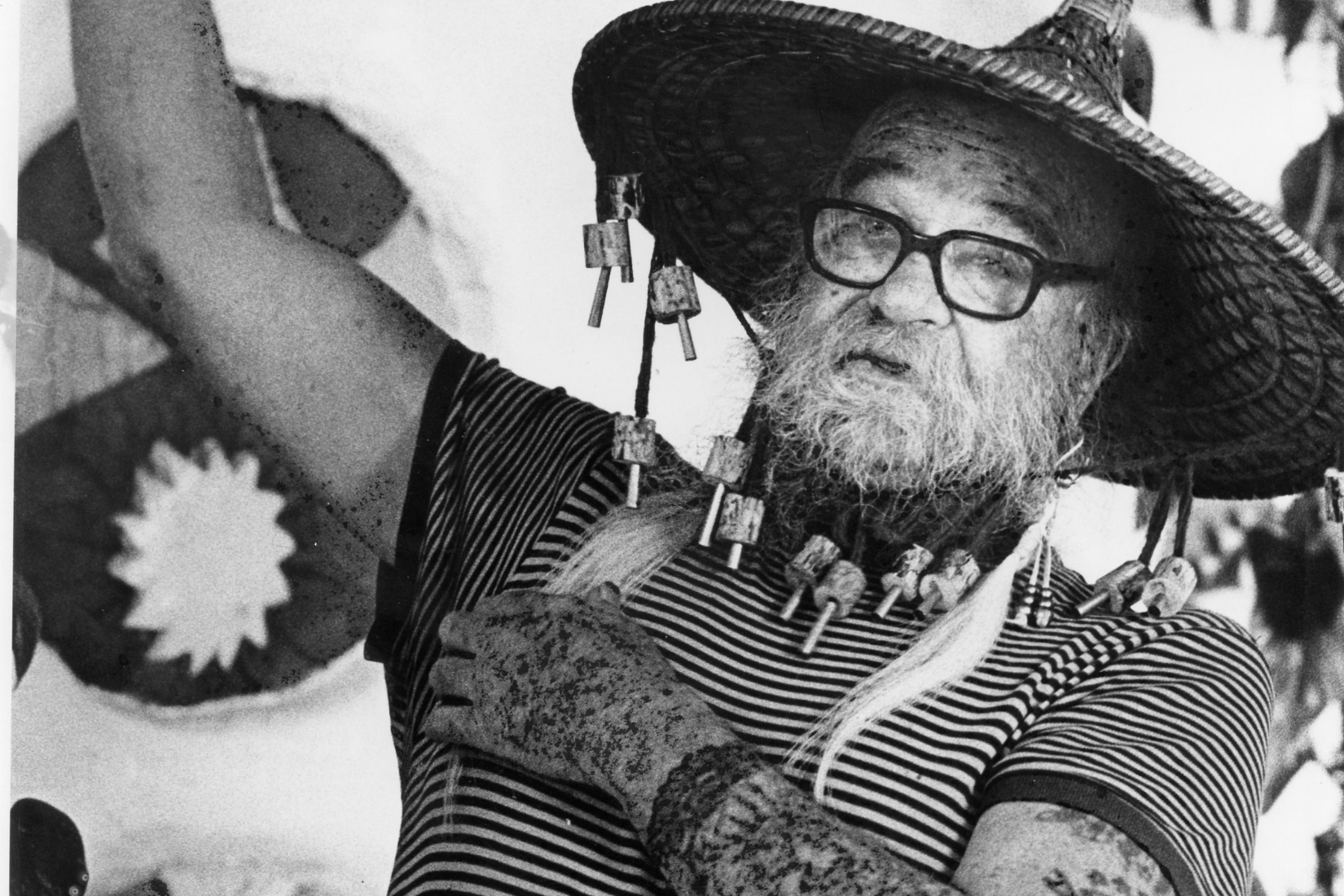Bi-coastal collaboration brings sound, poetry and performance installation to Pasaquan
February 20, 2025

Columbus State University’s Pasaquan will host an immersive soundscape installation that weaves together sound art, poetry and vocal ensemble with performance art to explore humanity’s primordial connection to dawn. “The Quieting World,” the latest project by artist Joshua-Michéle Ross, promises to capture the dawn chorus from two distinct American ecosystems.
“The Quieting World” features 16 recordings of dawn captured during the autumnal equinox of Sept. 22, 2024. These recordings were simultaneously made across the landscapes of Pasaquan in Buena Vista, Georgia, and the Headlands Center for the Arts, an artist residency in Sausalito, California.
Following its premiere at the Headlands Center for the Arts, the installation will open on April 25 at Pasaquan. The opening ceremony, from 2 to 8 p.m., will forge a powerful connection between these two distinct creative environments and showcase a unique levitation ceremony created by Columbus State students.
Both the Headlands and Pasaquan exhibitions will feature a performance piece by Travis Dodd, that connects the experiences at both sites. Dodd is a performance artist and lecturer in Columbus State's Department of Art, where he teaches sculpture, expanded media, and contemporary art theory and foundations. Along with Dodd, the Headlands-based activation will incorporate other artistic disciplines, including curated works exploring the Bay Area ecology by Pulitzer Prize-winning poet Forrest Gander and a specially commissioned song cycle by acclaimed Oakland-based women’s vocal ensemble Kitka.
 “The intersection of sound art, performance and ecological awareness at the core of
‘The Quieting World’ represents a pivotal moment for Pasaquan—and a significant partnership
with one of the nation’s most renowned artist residencies,” said Michael McFalls (pictured), Pasaquan’s director. “This collaboration brings together extraordinary
artists whose work transcends traditional boundaries—creating a profound dialogue
between two historically significant creative spaces. It’s exactly the kind of multi-disciplinary
exploration that energizes and advances our mission.”
“The intersection of sound art, performance and ecological awareness at the core of
‘The Quieting World’ represents a pivotal moment for Pasaquan—and a significant partnership
with one of the nation’s most renowned artist residencies,” said Michael McFalls (pictured), Pasaquan’s director. “This collaboration brings together extraordinary
artists whose work transcends traditional boundaries—creating a profound dialogue
between two historically significant creative spaces. It’s exactly the kind of multi-disciplinary
exploration that energizes and advances our mission.”
“The Quieting World” creates a unique bi-coastal dialogue about art, ecology and human connection to place by uniting these historically significant creative-renewal sites.
 “The Quieting World asks visitors to reckon with two seemingly contradictory messages,”
Ross (pictured) explains. “The world is growing quieter as it recedes under modernity,
yet each dawn still provides a moment of exquisite beauty and jubilation. The recordings,
captured at the moment of balance between light and darkness during the autumnal equinox,
speak to themes of disappearance and renewal, despair and hope.”
“The Quieting World asks visitors to reckon with two seemingly contradictory messages,”
Ross (pictured) explains. “The world is growing quieter as it recedes under modernity,
yet each dawn still provides a moment of exquisite beauty and jubilation. The recordings,
captured at the moment of balance between light and darkness during the autumnal equinox,
speak to themes of disappearance and renewal, despair and hope.”
Ross is no stranger to Columbus State. He provided an audio complement to painter Kate Capshaw’s Spring 2023 painting debut at the Bo Bartlett Center. His audio recordings of conversations with the subjects depicted in Capshaw’s “Unaccompanied” exhibition provided an additional sensory layer to the 20-painting collection.
McFalls credits the visionary support of the Ruth Foundation for the Arts for making this significant collaboration between Columbus State, the stewards of Pasaquan, and the Headlands Center for the Arts possible. Based in Milwaukee and national in scope, Ruth Arts supports a dynamic cultural landscape through grant programs—continuing Ruth DeYoung Kohler II’s legacy of personal giving and invite-only initiatives designed as multi-year thinking partnerships.
Pasaquan visitors can experience “The Quieting World” through July 20.
ABOUT PASAQUAN
 Eddie Owens Martin (pictured), later known as St. EOM (pronounced “ohm”) by his Pasaquoyan
devotees, established the visionary art site Pasaquan in the 1950s—inspired to do so by a vision from the future that instructed him to
leave New York and to “return to Georgia and do something.” That “something” became
the immersive, internationally recognized, seven-acre visionary art environment in
Buena Vista.
Eddie Owens Martin (pictured), later known as St. EOM (pronounced “ohm”) by his Pasaquoyan
devotees, established the visionary art site Pasaquan in the 1950s—inspired to do so by a vision from the future that instructed him to
leave New York and to “return to Georgia and do something.” That “something” became
the immersive, internationally recognized, seven-acre visionary art environment in
Buena Vista.
Pasaquan’s “Mock-Precolumbian Psychedelic Wonderland” artscape includes six buildings—along with pagodas, a kiva and vibrantly colored totem poles—adorned inside and out with vibrant colors and bold patterns comprised of human figures and nature imagery. The remainder of the space includes a thousand feet of elaborately decorated winding cement walls connecting the buildings and thousands of St. EOM’s other artistic artifacts.
Columbus State assumed ownership of Pasaquan in 2014. Since then, Department of Art students and faculty have worked alongside the Pasaquan Preservation Society to restore and steward the site, develop arts programming, and maintain a Resident Artist Program. Pasaquan is on the U.S. National Register of Historic Places.
Media contacts:
Charles Fowler, Program Coordinator, Pasaquan, fowler_charles@columbusstate.edu
MJ Brown, Director of Development, Headlands Center for the Arts, mjbrown@headlands.org